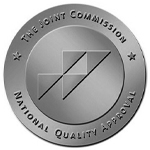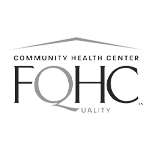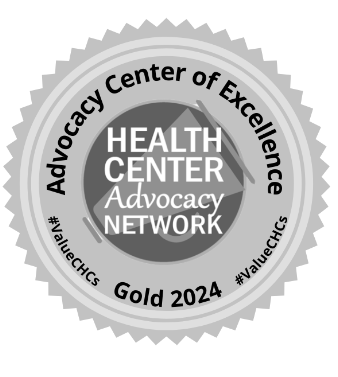
At Keystone Pediatric Developmental Center, patients with complex needs are provided with individualized speech, occupational and audiological services. Its speech therapy department is comprised of state licensed and certified speech language pathologists who are specifically trained in a wide variety of areas used to address complex communication challenges. One area within its scope of practice includes the evaluation and treatment of those who may benefit from Alternative and Augmentative Communication (AAC). Greg Hoover, a Speech Language Pathologist at Keystone Pediatric Developmental Center, explains what AAC is, who may benefit and more in today’s article.
Alternative and Augmentative Communication
The term alternative and augmentative communication can seem overwhelming, but the benefits are clear. Let’s break it down: augmentative communication is when one finds other means to supplement existing speech because of ineffectiveness or inefficiencies. In contrast, alternative communication is when one replaces non-existing or absent speech with another form of communication. Many individuals can benefit from the use of AAC and some may even use it on a daily basis without knowing it. For example, augmentative ways to communicate with your family and friends can be found in daily life through the use of smart phones, such as sending texts, GIFS and photographs.
Getting Started
When someone is referred to our clinic, speech-language pathologists, who are communication specialists, help determine if the patient could benefit from the implementation and facilitation of an alternative or augmentative form of communication. Determining eligibility for AAC begins with a referral by your primary care provider followed by a comprehensive evaluation by a speech language pathologist. As a parent or guardian, it’s important to provide medical information, education, interests, hobbies and communication needs of your child at the time of the evaluation. A medical diagnosis may help identify those who are at risk for expressive language and speech disorders. The following diagnoses might be risk factors to help identify candidacy: intellectual disability, apraxia of speech, autism spectrum disorder, stroke, traumatic brain injury or cerebral palsy.
After we have established that your child could benefit from AAC, there are many factors when developing an effective and efficient AAC system. I would like to briefly explain three areas of AAC that are evaluated by speech pathologists with input from a multi-disciplinary team that include: Form, Selection and Symbols.
Form
Determining the form of communication is important. Form can be broken down into two areas – unaided and aided systems. Unaided systems do not require an external tool to communicate, and one primarily relies on his/her own body (e.g. facial expressions, vocalizations, physical manipulation, gestures and manual signs). Aided systems rely on a tool outside of the body such as an alphabet board, static board, picture exchange system, writing or a speech generating device (e.g. dedicated communication system, tablet, smart phone). It is not uncommon that one uses a combination of both forms of communication in a single day.
Selection
Another component that speech-language pathologists must factor into developing an AAC system is the selection type. Selection type applies primarily to those who benefit from an aided communication system who require an external tool to communicate. Selection types can either be direct or indirect. Direct selection is when the person is able to make a direct selection by touch, joystick, eye gaze, trackball or head mouse. An indirect selection is when one uses an established motor movement, vocalization or switch to make a selection on what to say by using scanning methods. An example of indirect selection is when a box or cursor scans a row, column, or quadrant of symbols in a systematic fashion to allow the person to make a selection on what to communicate.
Symbols
The last element of the three components outlined above is the selection of symbols for an AAC system. When one has an aided system – say a tablet or picture board, a speech pathologist works with the client and family to determine how many vocabulary words are on the system and how those words are represented through images. A communication symbol is a visual representation of a thought, idea, emotion, object, action or concept. Choosing the way language is represented in an AAC system is highly dependent on the client’s skills and abilities. Language can be represented using one or a combination of the following representation methods: Alphabet-based, single meaning messages or multiple meaning icons. Single meaning messages are the easiest to interpret. A communication system using single meaning messages may include the use of objects, photographs and drawings. Multiple meaning icons are when a child uses icons that may be harder to guess, but could mean more than one concept based on the context. For example, if someone pointed to a picture of a frog jumping out of the water, the meaning of the symbol could represent ‘frog,’ ‘jump’ or ‘water’. Finally, symbols can also be represented as letters. A person who has a grasp on language and literacy but can’t speak, may benefit from the use of spelling or symbol labels to help communicate his/her message. Some people who have severe communicative disorders may have intact reading/writing skills and may benefit from an alphabet board, QWERTY keyboard or picture labels.
Benefits
There are many benefits to using an AAC device, however the concept of supplementing or replacing speech may create apprehensions from a parent or caregiver. A common concern that parents have for their child is, “Will my child rely on a computer to talk?” or “I really want my child to talk, will this hinder his/her ability to learn words?” This is a common misconception. The use of AAC does not negatively impact motivation or willingness to communicate using spoken words. Many studies have shown that the use of AAC can be beneficial to people of varying ages and degrees of impairment. Some studies have shown that children who are age 3 and younger can benefit from the use of AAC by facilitating the natural development of spoken speech and language. Other studies have shown that children who used speech generating devices improved their oral ability to communicate more than those who didn’t have devices. Another benefit to using AAC is the reduction of negative behaviors in your child that result from the inability to efficiently and effectively communicate.
This article provides a brief overview of what AAC is, who is a candidate for AAC, general areas a speech pathologist may consider when designing a system and the benefits of using AAC. If you feel like your child could benefit from a speech therapy evaluation, please contact their primary care provider for a referral to a speech language pathologist. It could make a lasting positive impact on his or her life.
This article contains general information only and should not be used as a substitute for professional diagnosis, treatment or care by a qualified health care provider.
For more information on Keystone Pediatric Developmental Center, click here.




